#vivasylibresnosqueremos. Feminist Digital Practices and Public Debates in Latin America.
Project title: #vivasylibresnosqueremos. Digital Practices and Public Debates of Feminisms in Latin America
Lead: Gabriela Sued (Estancias Postdoctorales por México Researcher at IIS-UNAM); María Concepción Castillo González
Team members: Sofía Alamo, Rosa E. Arroyo, Antonella Autuori, Andrea Elena Febres Medina, Dorismilda Flores-Márquez, Daniel lssl, Nohemí Lugo, Lucia Mesquita, María Ortiz, Claudia Pedraza, Mon Rodríguez-Amat, Monika Skazedonig, Gracila Vilaça
Project pitch slides
Final presentation slides
Key Findings
Introduction
Research Questions
Query Design & Visual Protocol
Methodology
Findings
Discussion
References
Key Findings
General findings for feminist struggle
Platformization has inevitably transformed feminist collective and connective action. Positively: new practices have emerged and more awareness was gained. There is a relevant feminist agenda installed on social platforms. But some atomization and individualization are also verifiable: while feminists use their accounts as individual users, collective expressions are less visible. Women need to gain more space on the top, especially on Twitter, YouTube, and TikTok, where men without a feminist or egalitarian discourse have high visibility. Women with feminist discourse and, in particular cases, organizations like Campaña Aborto Legal, which led the Argentinian struggle in favor of abortion legalization, are the prod-users on Instagram with high visibility.
In the case of anti-rights groups, action is not organized. Leading figures are TV celebrities, and in a second place, religious movements.
Particular findings for each platform
In the case of violence against women demonstrations, Twitter, rather than Instagram, focuses on street protest. Twitter is a network where institutions and government adhere more conventionally through collective and institutional identities. The individualization of protest characterizes Instagram. Hashtags used in this network adopt feminist vocabulary. With a strong focus on individual users, TikTok presents a less institutionalized mode of interaction. It also displays misogynistic attempts by men who employ an aggressive tone in the use of hashtags. On YouTube, mainstream media monopolizes engagement. The logic of recommendation algorithms can be an opportunity to connect different feminist accounts.
The strength of Latin American feminisms is enlivened and recreated with the impetuous irruption of the political struggle articulated in and from technologies and socio-digital spaces of the Internet. Transnational mobilizations are orchestrated from the local to confront growing violence against women and to subvert the historical gender mandates imposed by the patriarchal order (Alamo et al., 2016; Mitrovic, 2017).
According to Pedraza and Rodríguez (2019), hashtags associated with the narrative of the struggles of Latin American women have been spreading virally during the last five years. Slogans promote identifiable themes: reproductive rights, such as #MareaVerde in Argentina and #AbortoLegal2020 in Mexico; the mobilizations of feminist commemorations, such as #PrimaveraVioleta and #25N in Mexico; and the demonstrations against femicide violence, such as #NiUnaMenos in Argentina, #NiUnaMás in Mexico and #VivasyLibresNosQueremos in several countries of the region (Esquivel, 2019).
However, the increase in feminist collective action on the Internet matches the reemergence of conservative tendencies that threaten to obstruct a necessary institutional change for women and their human rights. At the same time, these trends reflect the crisis of meaning produced by the neoliberal globalization model and its contradictions. Misogynistic attacks on the Internet, for example, are today characterized by a lack of credibility in the word of women. Forms of violence range from constructing a false narrative to disseminating data that encourage aggression and promote hate speech against them (Soto et al., 2019). Disinformation also emerges today as a weapon politically used against the main feminist movements in Latin America and the world. Cyber misogyny manifests itself in three dimensions: as a normalization mechanism directed at women who transgress the gender order by actively participating in public affairs; as a mechanism for the constitution of hegemonic masculinity; and as a mechanism for inhibiting the political participation of women that not only causes individual but collective harm (Pedraza, 2019).
In this context marked by tension, feminist groups organize themselves on the Internet, generate unprecedented digital practices and disseminate countless cultural productions that cross different platforms to influence media agendas, public debates, and the formation of new militants (Pedraza and Rodríguez, 2019).
Feminism is a highly productive and creative heterogeneous political movement that overflows categories, institutions, and identities and, therefore, repertoires of action. This heterogeneity forces the constant study of the social actors involved, the organizational, communicative, and aesthetic practices of collective action, and the main demands and debates in turn (Larrondo and Ponce, 2019).
The advent of feminist claims through socio-digital platforms in times of political and ideological tension calls for further problematizing and discussing the theoretical and methodological approaches necessary to address the social phenomenon.
The aim of this project is to explore the logics and geographies of current feminist digital practices and central debates in the digital sphere in Latin America (figure 1). It is situated in the Critical Platforms Studies field (Burgess & Green, 2018) from a Global South perspective (Milan & Treré, 2019). Platform Studies is conceived as a subfield of digital methods that, through the collection of publications, metrics, and metadata, aims to critically study the different dispositions, forms of use, and cultural guidelines that distinguish each social platform (Burgess & Green, 2018). We propose a cross-platform analysis (Rogers, 2017), understanding that current feminist connective actions (Bennet & Segerberg, 2012) are trans-platform, as they build narrative patterns across different platforms for the central debates. It is aimed to identify the various expressions of feminisms and how each platform models the diverse forms of expression about particular issues and countries.
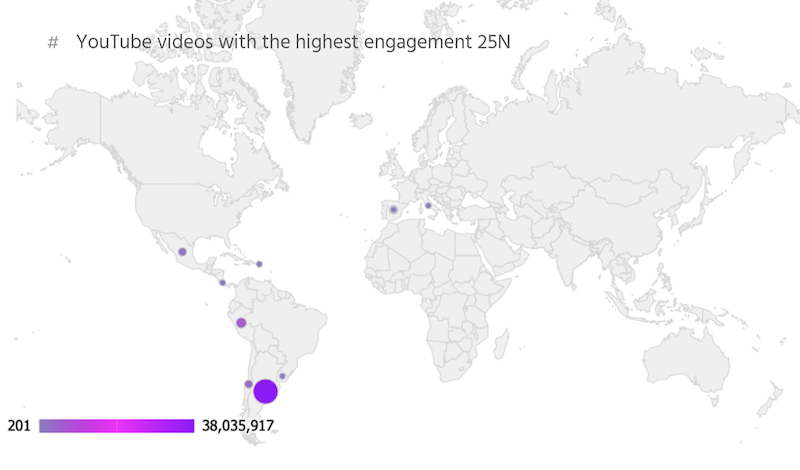
Figure 1. Distribution of videos about gender violence struggles with more engagement on YouTube
We aim to understand online feminist practices. We also seek to disassemble the platformization (Nieborg et al., 2018) of feminism, e.g., the mutual way in which different platforms model aesthetics, content, and engagement, while, at the same time, those elements model feminist expressions.
Both digital methods and platform studies pose an interesting challenge for the so-called Global South (de Souza Santos, 2014). There is a lack of balance between the data-focused production of American and European literature and the one produced in Latin American countries. (Milan & Trere, 2019). Differences in languages, academic schools of social communication, topics of interest, and conjunctures regarding uses of technologies imply the need to readjust digital methods and platform studies in the Spanish literature. At the same time, they contribute new themes, perspectives, and procedures to the international field (Meneses, 2018).
- What are the different topics, issues, and perspectives of feminisms on various platforms, and which digital and spatial geographies they build?
1.a What kind of discourses and collective expressions does the data reveal?
1.b How are visual, mapping, metrics, and hashtags helpful analysis to reveal the women empowerment and rebellion against patriarchy in Latin America?
1.c How are different kinds of oppositions, like anti-feminism, mysoginia, and misinformation expressed, and which platforms encourage it more?
- How are feminist issues expressed concerning language (text, image, moving image) and the culture of each platform?
2.a Which of these expressions are cross-platform?
2.b How do those discourses and practices take place?
- How do platform-specific interfaces and algorithms shape these discourses and practices?
Subprojects and Research Questions
To answer the research questions, we formed three subgroups. The first group revised aspects about high visibility users in the four platforms: Instagram, YouTube, Twitter, and TikTok, taking into account different issues: anti-abortion, gender-issue, and legal abortion.
The second group dealt with the discursive issues of all topics from four types of word processing: co-occurring hashtag networks, hashtag frequency, lexical networks, and emoji analysis.
Finally, the third group was dedicated to analyzing visual culture and its recognition by the Google API Vision computer vision system.
Query Design & Visual Protocol
Query design and data collection were previous to SmartLab. Data was collected by different scraping techniques and tools depending on the platforms. For Twitter and TikTok, we made requests to the API through RStudio Interface. For Instagram, we also used RStudio but with a crawler scraping technique because of its API’s closing. And we also used YouTube Data Tools (Rieder, 2015) to collect different data types from YouTube. The main hashtags we use are #25N, #niunamenos and #abortolegal2020. We also have an anti program (Akrich & Latour,1992) sample of hashtags opposite to the legal abortion. All these tags focus current attention and debates on different issues of feminism in Latin America (table 1).
|
Platform |
Hashtags/search query |
Main theme |
Data |
|
|
#25N; #vivasylibresnosqueremos; #niunamenos; |
Elimination of Gender Violence |
more than 27,000 tweets and metadata without retweets and a sample of 700 images |
|
#abortolegal2020; #abortolegalya |
Legalization of abortion (mainly in Argentina) |
more than 54,000 tweets and metadata without retweets |
|
|
|
#25N; #vivasylibresnosqueremos |
Elimination of Gender Violence |
more than 8300 images with metadata |
|
#abortolegal2020 |
Legalization of abortion (mainly in Argentina) |
more than 8,000 images with metadata |
|
|
YouTube |
#25N México #Niunamenos |
Elimination of Gender Violence |
Three video list with 1500 metadata of videos |
|
TikTok |
#25N, #feminismo #vivasnosqueremos |
Elimination of Gender Violence |
more than 700 fixed images and metadata |
Table 1. Collection of curated datasets
The visual protocol shows the data flow from the collected data to the final versions’ visualizations (figure 2). It also shows the diversity of data, data processing, and data visualizations achieved on the project.
The three subprojects worked with the three main issues, gender violence, legal abortion, and anti-rights, on different platforms. As each one worked with varying data types, they designed different graphics and answered specific research questions.
Subproject 1. High visibility groups. Who is leading the debates?
The first subproject worked mainly with all the data and metadata concerning the four platforms’ high visibility, specifically followers and engagement. Users were classified according to a categorization of actors: influencers, NGOs, politicians, different kinds of media, and individual activists.
Subproject 2. Discourse, debates, and Networks. What is it talking about?
The second subproject worked with themes, issues, confrontations, and textual expressions. Participants worked with specific metadata as texts and descriptions, hashtags, and emojis. In this group Instagram and Twitter were the more studied platforms. Frequency and co-occurrence analysis were applied to hashtags for the three issues: gender violence, legal abortion, and anti-rights. Twitter texts were analyzed with lexical networks and YouTube through an analysis of comments extracted from feminists videos.
Subproject 3. Visual Culture and Algorithms. What is represented, and how is the algorithm reading the protest?
This subgroup approached visual culture curating a dataset mainly based on images of the street protests posted in Instagram. These images were also read by Google API Vision to explore the ways computer vision recognizes social protest.
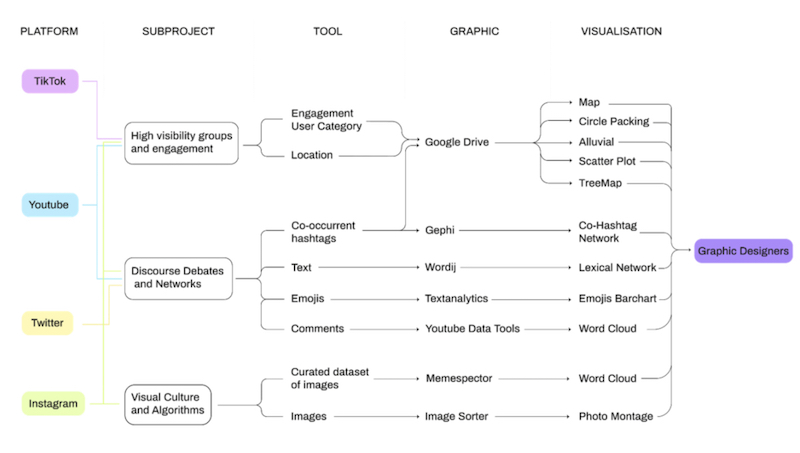
Figure 2. Project visual protocol
- Who is leading the debate?
Few actors concentrate significant influence, while a large amount of different actors have little impact on each platform. Each subject and social network has a particular kind of high visibility user(Omena, Rabello, & Mintz, 2020). In the case of the struggle against gender violence, high visibility users tend to be individual users. Many users are feminist women affiliated with feminist movements but posting individually. Mixed profiles are present on Instagram and Twitter: lawyers specialized in gender violence as influencers and activists. In Legal Abortion, as the primary purpose was the approval of the law, the debate was primarily led by collective organizations and independent media, e.g., Media Ninja Brazil (figure 3).
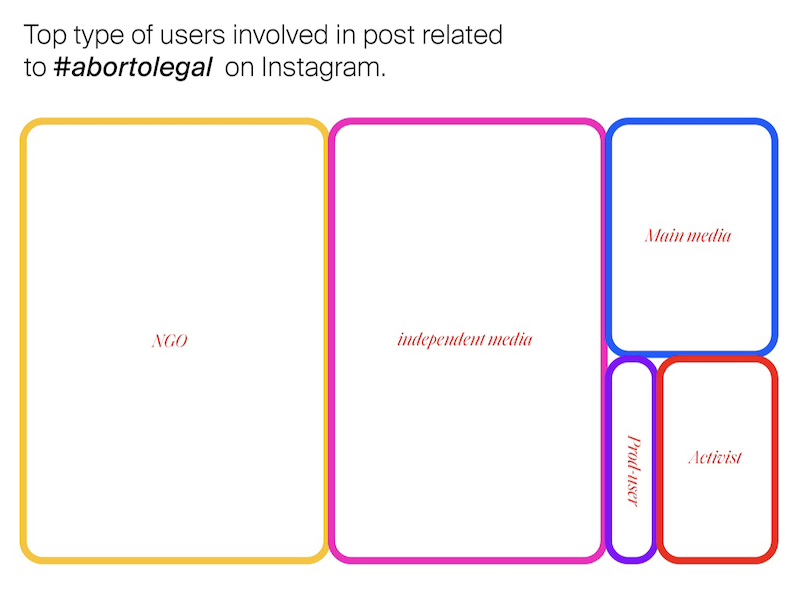
Figure 3. Instagram top users
In the case of anti-rights defenders, institutional religious actors and their related organizations, TV and media influencers were the prominent users with highest engagement, on all platforms. Some influencers were male, and as feminist leaders have also adopted the hashtag, there were feminist activists as top users. The digital storytelling of “#salvemoslasdosvidas” was led by institutional channels, most religious and male users. In contrast, the narrative that supports abortion was led by institutional media channels and female users. That shows that the anti-abortion agenda is a male concern.
On the other hand, on YouTube, the female voice is missing. Digital storytelling is led by institutional actors, such as the primary media, government institutions, various companies, and male YouTubers (figure 4). On a closer look, the #25N database is dominated by YouTubers, institutional channels of mainstream media and the Spanish government. In contrast, the #NiUnaMenos database has more channels that are located in Latin America with a greater diversity of actors, such as independent media, prod-users, feminist groups, small media channels, mainstream media channels and YouTubers. The particularly high rates of femicide in Latin American countries could account for this, as happens in Mexico, with an emergent strong feminist movement, and in southern Latin America, with a more significant presence of feminism.
As on YouTube, on TikTok, men’s voices are prominent, but his purpose is not to support the struggle. Still, to gain notoriety through the hashtags, its purpose is not to keep the fights but to gain notoriety through hashtags, in a sort of hashtag hijacking to achieve women’s attention in a paradoxically patriarchal movement. TikTok is the more deinstitutionalized platform. There is no presence of NGOs, collective actors, media, and institutions in the discussion. In the debate of #Abortolegal2020, slightly higher participation of identified public figures was detected: radio hosts, models, actresses, all of them with profiles that exceed 100 K followers. However, there is also no notable presence of pro-legalization activist groups. Unlike the discussion of #Salvemoslasdosvidas, in the data around #Abortolegal2020, there is a presence of pro-life groups, which try to hijack the pro-legalization hashtags to make their arguments visible. However, they fail since their publications have shallow engagement. It stands out that male profiles, in figure 5, published the posts with the highest attention. This is interesting because although it can be interpreted as the involvement of other actors in which until now were considered women’s issues, if it invites us to analyze what kind of discourses on women’s rights these actors may be spreading from patriarchal positions, especially in TikTok publications, which are more associated with playfulness, mockery and the use of humor. Neither the pro-legalization nor the pro-life profiles generate greater engagement; it is the users with little connection to activism who produce the most visible publications without being part of organized collective actions. In other words, neither the number of followers nor membership in an organized activist group is significantly related to TikTok engagement.
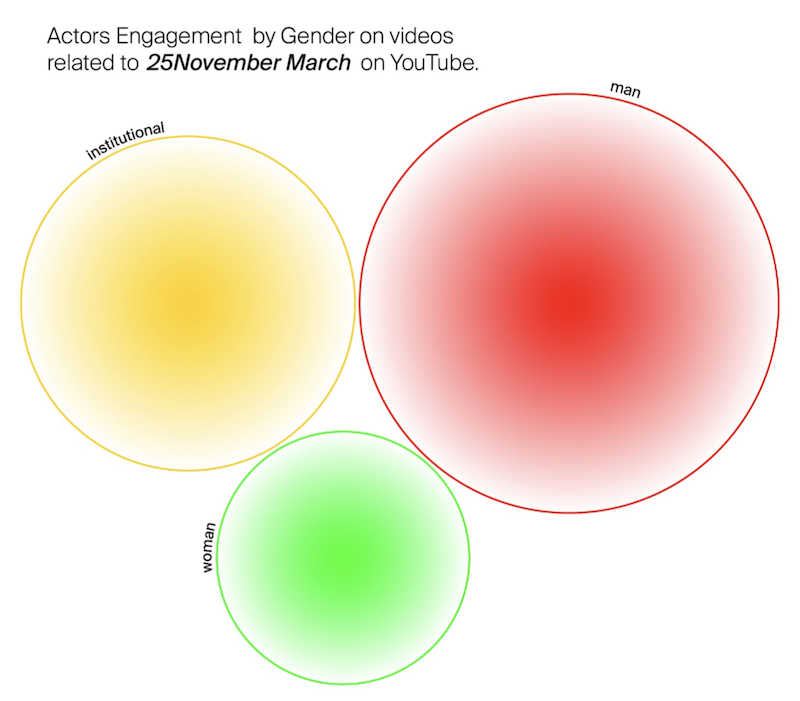
Figure 4. YouTube Top Users by Gender

Figure 5. TikTok Users by Gender
- What does the data talk about?
Based on preliminary findings on the actors leading the debate on each platform, we selected Instagram as the main network to analyze feminist messages and discourses through co-occurring hashtags and emojis. We additionally delved into YouTube to focus on anti-abortion and anti-women’s rights discourse.
We found a proliferation of co-hashtags in Instagram’s Legal Abortion sample that included different feminist causes (figure 6). On the one hand, this could mean that feminists use other hashtags to stimulate conversation around feminist topics in order to bring women and other gender identities together on the Web. On the other hand, this can also be interpreted as a measure of dissent within the different ways of understanding feminism. Some co-hashtags like #yositecreo or #niunamenos, for instance, could be read as a tendency to homogenize the movement’s claims, leaving less visibility for other causes, such as trans-feminisms and the lgbt+ community claims. In this sense, we also found few interventions of other feminists of the region. Only independent news accounts from Chile, Uruguay, and Peru made small contributions.
Also, some commercial accounts used the analysed hashtags to sell their products and gain visibility. Some of these commodities were related to the topic, but others were not. This use highlights the platform’s logic in terms of gathering data from users to identify market niches. Gender violence co-hashtags networks, as well, showed marks of platformization, mixing feminist hashtags and feminist slogans with native practices of social networks, such as challenges, hashtags typical of Instagram visual culture, and others related to niche markets.

Figure 6. Instagram’s Co hashtag network related to legal abortion
Another finding showed that the antirights conversation had been “hijacked” by pro-legal abortion users, but not contrary. This is noted in both co-hashtags networks and the emojis bar chart, where we can find a significant amount of hashtags and emojis that are not used by anti-legal-abortion accounts. The emojis bar chart (figure 7) shows how emojis can also be understood as a symbolic way of expressing personal stance, and at the same time, establishing dominance on the social media network arena. Pro-legal-abortion accounts used anti-rights hashtags to enter the conversation of anti-legal-abortion users who identify themselves by using the light-blue heart emoji.
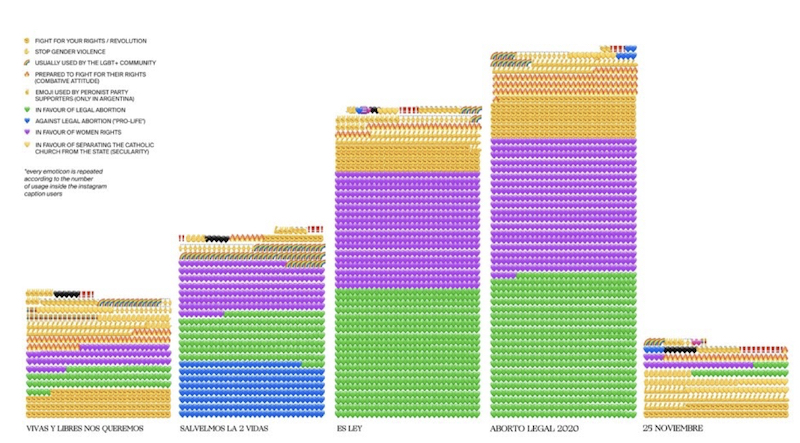
Figure 7. Instagram Emojis Barchart
The anti-feminist discourse on YouTube, based on the analysis of the first ten videos of the sample (figure 8), shows in the case of #LegalAbortion2020 two clusters of similar weight, if we take into consideration the size of the graph, but differentiated as to the two main words that revolve around them: life and abortion. In the first cluster linked to the word life, the most present terms are fetus, human, and rights, which are very present in the feminist discourse. These terms are linked to “abortion,” and all of them are congruent with the defense of its legalization. Hence, we can suppose some hijacking of comments by feminist positions, as occurred in other platforms, like Instagram: legal, safe, favorable, and accessible. Finally, in the hashtag #Salvemoslas2vidas, words linked to religious aspects such as Dios [God] appear. Mother also appears in the discourse analysis with this tool. However, the dominant weight in the discourse is given to the words abortion, life and women.
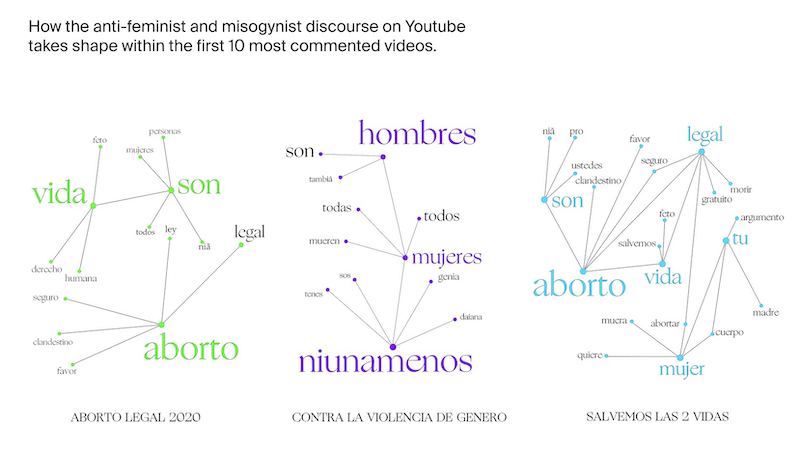
Figure 8. WordNet of the ten YouTube more commented videos
- Visual culture and Algorithms
Visual culture is a crucial element in digital culture and communication, mainly through photography and video. Our approach included analyzing visual datasets extracted from Instagram around topics, such as the struggle against gender violence, pro-abortion activism, and anti-abortion activism, the latter two in Argentina.
The distant visual reading allowed us to find that the symbolic colors of the feminist movement, such as purple, green, and white, were present along with orange, the color designed by the UN campaign Orange Day commemorated on November 25 (figure 9). The orange day is a campaign against gender violence.
We continued with a closer visual reading of image collections by color. Our second finding is that white and orange groups were composed of graphics, where texts are predominant. White color included poetry, and other texts, drawings, and illustrations. The orange, purple and black collections also followed this trend. However, both of these last collections also contained many photographs. Black predominant photographs were night shots of demonstrations on the street. Purple dominant photographs were images of protests on the street where buildings were colored purple or people dressed in purple. According to the distant visual reading, the whole collection of images were predominantly graphics such as texts with colored background or illustrations, and demonstration photographs were scarce. To prove it, we explored the complete collection to count the total number of demonstration images. We included both photos of demonstrations in public spaces and expressions on private spaces. This decision was based on confinement, which may have imposed people to protest in their homes or workspaces. Besides, digital protest culture follows other aesthetics as political tools. For instance, a specific way of “poner el cuerpo” a usual image where individuals or groups show their messages. It is usually a frontal medium shot image of their face and body with a slogan. Our third finding was that the total of protest images is 212, just 4% of the whole collection. A distant visual reading of this small data set and closer looks at it can be seen in the lower right quadrant of the figure above.
In Instagram’s pro-life activism, we identified the posts with the highest engagement by identifying the images that got the highest levels of visibility and identification among Instagram users. The top three included a journalistic photo from mainstream media, one selfie from a TV presenter (woman), and a video from a religious organization’s leader. Through manual exploration of the corpus, we identified different aesthetics that are present in these images. In the urban public space, the blue wave made itself visible throughout demonstrations in the streets, monuments, and squares of Argentina (figure 10), showing blue flags, scarves, and clothes in white and blue.
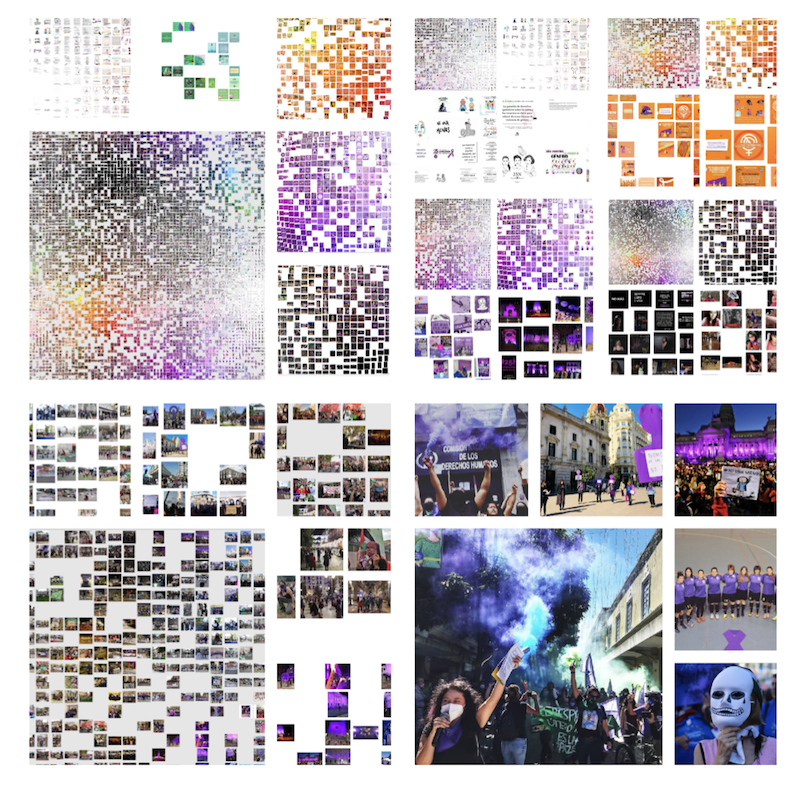
Figure 9 Instagram images against gender violence
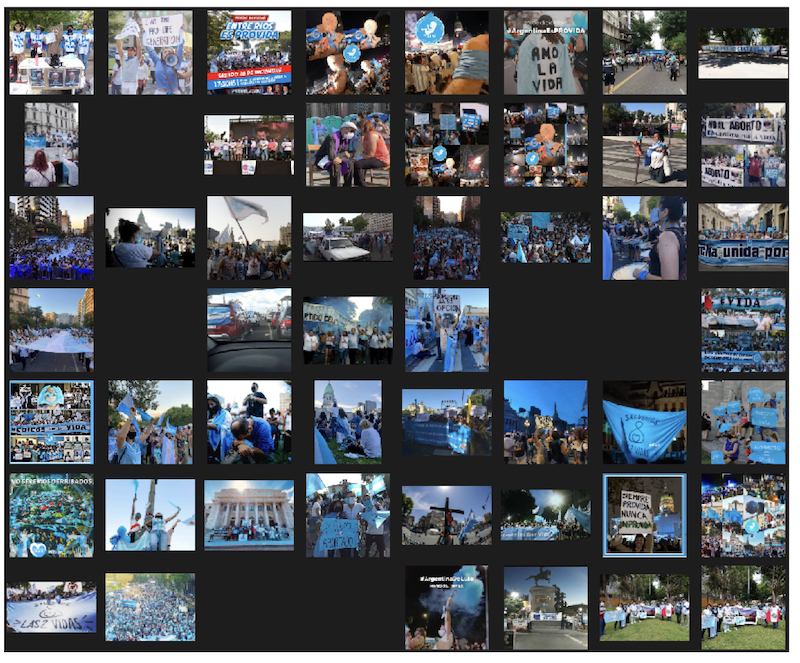 Figure 10. The blue wave in the streets
Figure 10. The blue wave in the streets
Finally, we use Google API Vision to read these visual data to know how the computer vision understands these expressions (figure 11). Google AI got confused: it labeled images of demonstrations as “concerts” because of the nature of L.A. feminist expressions: between the protest and the collective celebration of their agency.
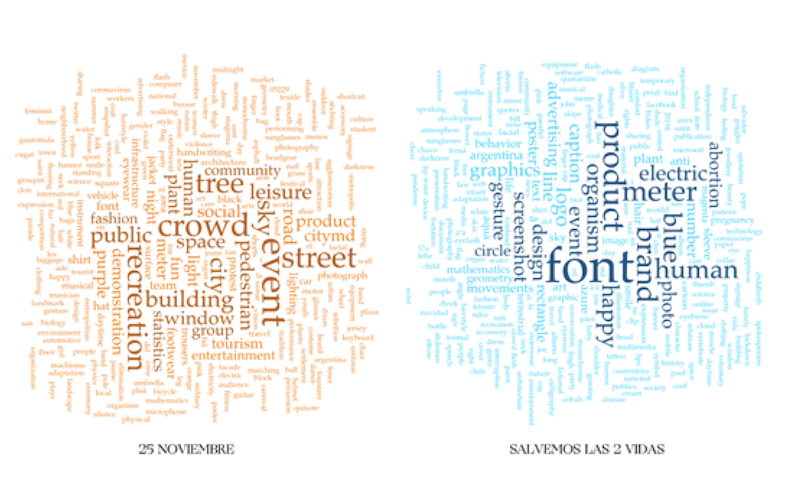
Figure 11. Google API Vision Word Cloud
In order to perform an in-depth cross-platform analysis, we need tools to standardize databases and consider the relationship among different platforms. We also need standards for user categorizations that allow comparison of users’ role throughout different media and hashtags.
Regarding our finding of a fragmented, scarce presence of feminist collectives, we need to deepen our analysis with a closer look in order to identify collectives’ presence and their way of expression, especially in the fight against gender violence front.
Alamo S., Bordoy G., Chetto M., Ibáñez F., Migliorini A. y González M.E. (2016). #NiUnaMenos: Big Data para la comprensión de una problemática de género. Humanidades Digitales: Construcciones locales en contextos globales. Asociación Argentina de Humanidades Digitales, Buenos Aires.
Akrich, M., & Latour, B. (1992). A Summary of a Convenient Vocabulary for the Semiotics of Human and Nonhuman Assemblies. Bijker, W.E., Law, J.
Bennett, W. L., & Segerberg, A. (2012). The Logic of Connective Action. Information, Communication & Society, 15(5), 739-768. https://doi.org/10.1080/1369118X.2012.670661
Bruns, A., & Burgess, J. (2015). Twitter hashtags from ad hoc to calculated publics. En Hashtag Publics: The Power and Politics of Discursive Networks (pp. 13-28). New York: Peter Lang. Recuperado de https://eprints.qut.edu.au/90461/
Burgess, J., & Green, J. (2018). YouTube: Online video and participatory culture. Cambridge: Polity Press
De Souza Santos, B, & Meneses, M.P. (2014). Prefacio. En Epistemologías del Sur: Perspectivas. Madrid: Akal.
Esquivel, D. (2019). Construcción de la protesta feminista en hashtags: aproximaciones desde el análisis de redes sociales. Comunicación y Medios, (40), 184-198.
Frankze, A., Bechmann, A., Zimmer, M., Ess, C., & Association of Internet Researchers. (2020). Internet Research: Ethical Guidelines 3.0. Association of Internet Researchers. Recuperado de https://aoir.org/reports/ethics3.pdf
Herrero-Diz, P., Pérez-Escolar, M. y PlazaSánchez, J.F. (2020). Desinformación de género: análisis de los bulos de Maldito Feminismo, Icono 14, 18 (2),188-216. doi:10.7195/ri14.v18i2.1509
Larrondo, M. & Ponce Lara, C. (2019) (ed). Activismos feministas jóvenes. Emergencias, actrices y luchas en América Latina. CLACSO. http://biblioteca.clacso.edu.ar/clacso/gt/20191202034521/Activismos-Feministas-Jovenes.pdf
Marres, N., & Weltevrede, E. (2013). Scraping the Social? Issues in live social research. Journal of Cultural Economy, 6(3), 313-335.
Meneses Rocha, M. E. (2018). Grandes datos, grandes desafíos para las ciencias sociales. Revista Mexicana de Sociología, 80(2). hhttps://doi.org/10.22201/iis.01882503p.2018.2.57723
Milan, S., & Treré, E. (2019). Big Data from the South(s): Beyond Data Universalism. Television & New Media, 20(4), 319-335. https://doi.org/10.1177/1527476419837739
Mitrovic, M. (2017). Activismo ciberfeminista actual en la Ciudad de México. Revista Pillku, 22, Comunes y Cultura Libre.
Moretti, F. (2015). Distant reading. London: Verso.
Nieborg, D. B., & Poell, T. (2018). The platformization of cultural production: Theorizing the contingent cultural commodity. New Media & Society, 20(11), 4275-4292. https://doi.org/10.1177/1461444818769694
Omena, J. J., Rabello, E. T., & Mintz, A. G. (2020). Digital Methods for Hashtag Engagement Research. Social Media + Society, 6(3), 2056305120940697. https://doi.org/10.1177/2056305120940697
Pedraza Bucio, C. & Rodríguez Cano, C. (2019). Resistencias sumergidas. Cartografía de la tecnopolítica feminista en México. Teknocultura. Revista de Cultura Digital y Movimientos Sociales, 16(2), 197-212. 10.5209/tekn.64163
Pedraza Bucio, C. (2019) Cibermisoginia en las redes sociodigitales: claves para el análisis de la masculinidad. Cuestiones de Género: de la igualdad y la diferencia, 14,51-66.
Rieder, B. (2015). YouTube Data Tools. Iniciativa de Métodos Digitales, Universidad de Ámsterdam. Recuperado de https://tools.digitalmethods.net/netvizz/youtube/mod_videos_list.php
Rogers, R. (2017). Digital Media and Cross-Platform Analysis. The SAGE Handbook of Social Media. London: Sage. Recuperado de https://www.researchgate.net/publication/327941084_Social_media_research_after_the_fake_news_debacle
Rogers, R. (2019). Doing Digital Methods. London: SAGE.
Soto, C. Ananías, A., Sánchez, K. y Vergara D. (2019) “Violencia en Internet contra feministas y otras activistas chilenas”. Revista Estudos Feministas, Florianópolis, v. 27, n. 3, e58797. Consultado el 20/12/2020 en: http://www.scielo.br/scielo.php?script=sci_arttext&pid=S0104-026X2019000300212&lang=es
Sued, G. E. (2020). Repertorio de técnicas digitales para la investigación con contenidos generados en redes sociodigitales. PAAKAT: Revista de Tecnología y Sociedad, 0(19). Recuperado de http://www.udgvirtual.udg.mx/paakat/index.php/paakat/article/view/498
